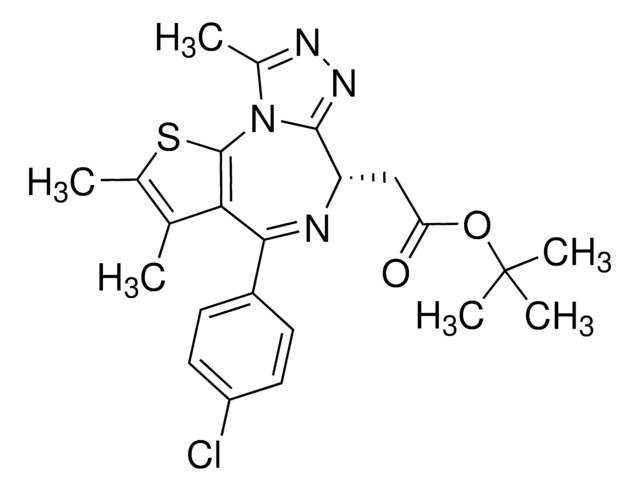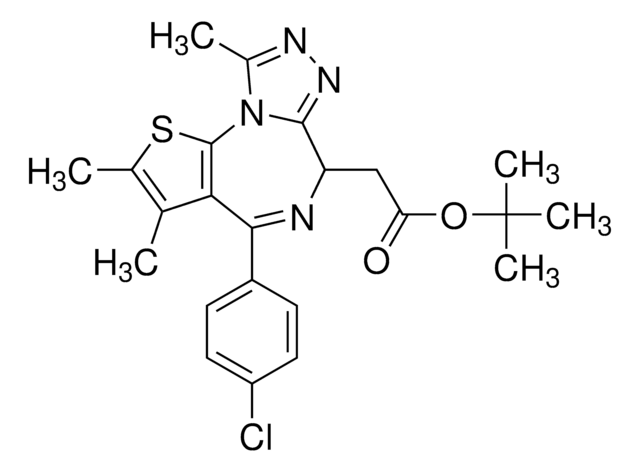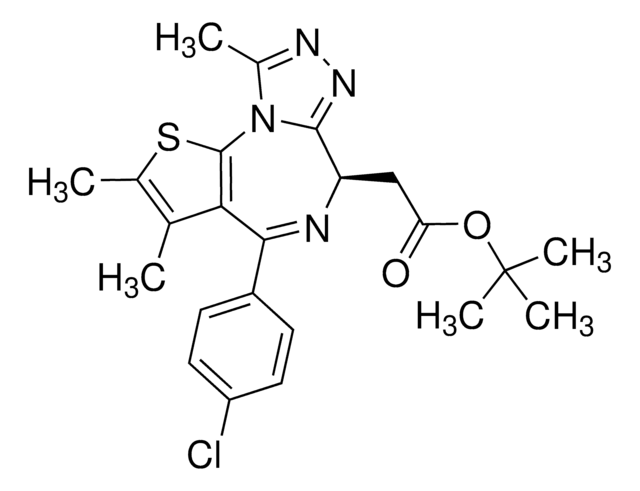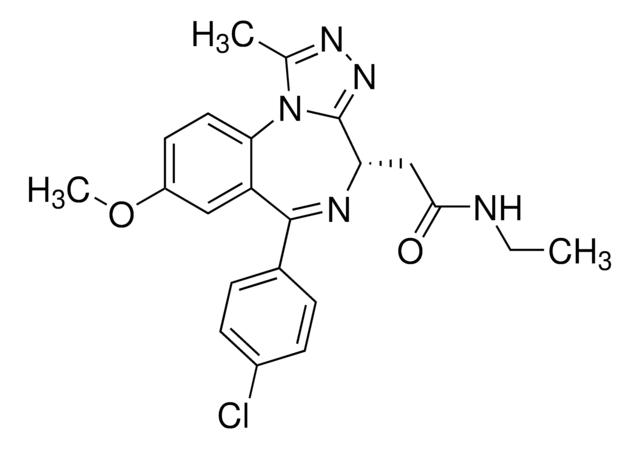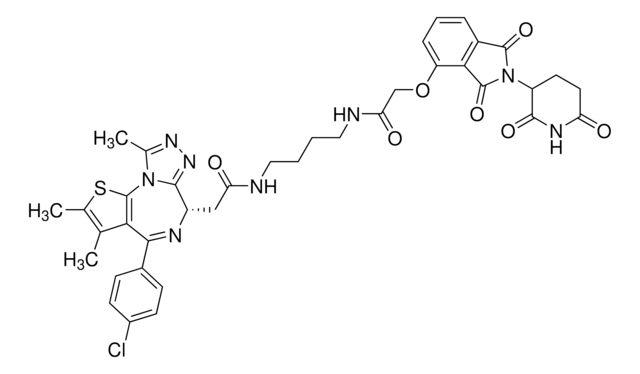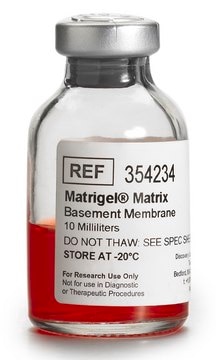Kluczowe dokumenty
SML2623
(+)-JQ-1 carboxylic acid
≥95% (HPLC)
Synonim(y):
(6S)-4-(4-Chlorophenyl)-2,3,9-trimethyl-6H-thieno[3,2-f][1,2,4]triazolo[4,3-a][1,4]diazepine-6-acetic acid, (S)-[4-(4-Chlorophenyl)-2,3,9-trimethyl-6H-thieno[3,2-f][1,2,4]triazolo[4,3-a][1,4]diazepine-6-yl]acetic acid, 2-[(6S,Z)-4-(4-Chlorophenyl)-2,3,9-trimethyl-6H-thieno[3,2-f][1,2,4]triazolo[4,3-a][1,4]diazepin-6-yl]acetic acid
About This Item
Polecane produkty
Próba
≥95% (HPLC)
Formularz
powder
kolor
white to beige
rozpuszczalność
DMSO: 2 mg/mL, clear
temp. przechowywania
2-8°C
ciąg SMILES
[s]1c2c(c(c1C)C)C(=N[C@H](c4[n]2c(nn4)C)CC(=O)O)c3ccc(cc3)Cl
InChI
1S/C19H17ClN4O2S/c1-9-10(2)27-19-16(9)17(12-4-6-13(20)7-5-12)21-14(8-15(25)26)18-23-22-11(3)24(18)19/h4-7,14H,8H2,1-3H3,(H,25,26)/t14-/m0/s1
Klucz InChI
LJOSBOOJFIRCSO-AWEZNQCLSA-N
Działania biochem./fizjol.
Kod klasy składowania
11 - Combustible Solids
Klasa zagrożenia wodnego (WGK)
WGK 3
Temperatura zapłonu (°F)
Not applicable
Temperatura zapłonu (°C)
Not applicable
Wybierz jedną z najnowszych wersji:
Certyfikaty analizy (CoA)
It looks like we've run into a problem, but you can still download Certificates of Analysis from our Dokumenty section.
Proszę o kontakt, jeśli potrzebna jest pomoc Obsługa Klienta
Masz już ten produkt?
Dokumenty związane z niedawno zakupionymi produktami zostały zamieszczone w Bibliotece dokumentów.
Nasz zespół naukowców ma doświadczenie we wszystkich obszarach badań, w tym w naukach przyrodniczych, materiałoznawstwie, syntezie chemicznej, chromatografii, analityce i wielu innych dziedzinach.
Skontaktuj się z zespołem ds. pomocy technicznej